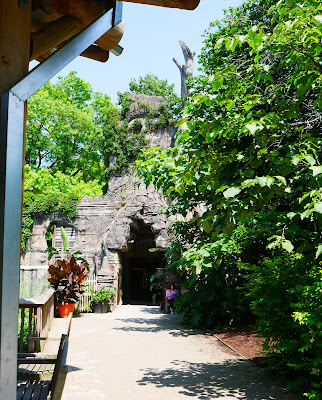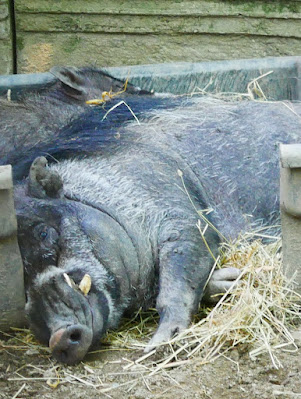Right next to the Lions you are greeted by the ruins of a southeast Asian temple. The attention to detail is delightful and besides being home to the zoo's pair of Bornean Orangutans, there are also a pair of Visayan Warty Pigs and the "in progress" creation of a new home for the zoo's Red Pandas. The main habitat contains both extensive interior and exterior space to allow for options all year around. Although the zoo does close to the public from December 1 through February 28/29 each year.
Also within this area of the zoo, guests can encounter a couple more species of small primates, Red Backed Agouti and North American River Otters. The latter were not out during my visit. Onto a look at the zoo zone I've labeled [Bb].
The African Lion Habitat.
Eva and Desta taking a serious late afternoon siesta!
AFRICAN LION
Panthera leo
What wonders await us in the Temple of the "Forest People"?
VISAYAN WARTY PIG
Sus cebifrons
Is everyone snoozing the afternoon away?
Upon closer inspection...she's got her eye on me! With less than 5% of their traditional habitat left, these animals are Critically Endangered--one step away from extinction. The Pittsburgh Zoo also cares for a pair.
A section of the interior portion of the Orangutan habitat with skylights allowing the sun to stream in.
Otis (age 7) and his mother Dasa (age 32) are the two Orangutans currently resident at the Erie Zoo.
Otis is Dasa's third successful live birth. Her mate, Joe, passed in 2023 after a risky and necessary medical procedure, which he survived initially only to succumb to post-operative complications.










No comments:
Post a Comment